Acne is a condition that affects over 650 million people globally - and it’s not just teens. Adult acne is a major skin concern especially among women. While so many people are affected, not everyone has the same type of acne - but learning about the different types of acne, its causes, and acne treatments to help you clear your acne faster!
Let’s talk about:
- What is Acne?
- The Causes and Triggers of Acne Explained
- Types of Acne
- The best ingredients to treat & prevent acne
- SKOON.’s Acne Fighting Skincare Routine
What is Acne?
Acne is derived from Greek, άκµή or acme, and stands for skin eruption. Acne affects almost 85% of adolescents and young adults, but may unfortunately also persist into adulthood.
Acne breakouts may occur in the form of whiteheads, blackheads, papules, pustules, cystic lesions and/or nodules - each of which is defined by specific characteristics (which we’ll cover later on). We’ll cover everything you need to know about treating the different types of acne, depending on their severity.
Although acne may more commonly appear on the face, breakouts may also occur on the forehead, upper back, and shoulders.
Chances are you’ve probably experienced a form of acne and wondered what caused your skin to experience a breakout. Let’s dive into some of the causes and triggers associated with acne below!
The Causes and Triggers of Acne Explained
The most common trigger of acne for teenagers are hormonal disturbances that accompany puberty. If acne continues to persist into adulthood, hormonal triggers can still be to blame, but the most likely causes are lifestyle related factors such as diet, smoking, and lack of proper cleansing. In cases where you are genetically predisposed to acne, you are likely to experience breakouts more often than others.
Teenage boys are said to be more likely to suffer from severe forms of acne as compared to teenage girls, due to higher levels of androgens (hormones that play a role in male traits and reproductive activity) that influence the production of sebum. In adulthood, however, premenstrual hormonal changes may cause acne more frequently, coupled with the use of cosmetics (especially those containing ingredients that aren’t so kind to the skin).

How Do Acne Pimples Form?
The pimples and blemishes associated with acne form as a result of blockages in the skin’s pores. These occur due to excessive secretion from the skin’s sebaceous glands, combined with an accumulation of dead skin cells that block pores.
While you would think blocked pores are enough, this combination encourages skin bacterium, known as ropionibacterium/cutibacterium, to multiply and increase inflammation under the skin’s surface inside the pores - causing redness and sensitivity. The combination of dead skin cells, sebum, and bacteria contribute to the breaking down of the walls of the hair follicle - once this happens, you find yourself with a classic acne lesion.
Let’s find out more about the different types of acne in order to further understand how they are characterised, as well as their effects and impact on the skin.

Types of Acne
Acne is a general term for breakouts that occur within the skin, but each type of acne requires a different treatment and each breakout and accompanying lesions vary in terms of their characteristics.
Some may cause inflammation, while others may be non-inflamed lesions that appear on the skin’s surface. Understanding the type of acne you’re experiencing can be the key to finding an effective treatment, fast.
Non-inflammatory Acne Lesions
Non-inflammatory lesions are the least severe forms of acne, lacking severe pain, swelling, and underlying or visible redness. These include white heads, blackheads, microcomedones, and milia.
Non-inflammatory acne lesions usually respond well to over the counter treatments and skincare formulations including retinoids.
Whiteheads
Whiteheads, or closed comedones, are small spots or bumps that are a flesh coloured or white tone. While avoiding touching your whiteheads can make them disappear on their own over time, scratching and picking them can result in future scarring. Overall, it is unlikely that these closed comedones will create future skin issues - as unpleasant as they are at the time.
Whiteheads develop due to a combination of dead skin cells and excess sebum clogging your pores - resulting in propionibacterium/cutibacterium bacteria growth. Whiteheads differ from blackheads, as they are closed within the pore, and cannot be pushed out of the skin. As a result, they are also not exposed to air and therefore don’t experience oxidation.
Whiteheads could be treated using natural remedies, as well as over-the-counter and prescription treatments. We would recommend retinol in order to assist in the clearing of whiteheads, as it's a strong keratolytic (peeling agent) that increases the rate of your skin cell turnover by removing dead cell build-up. Our Retinin Cream offers complete action purifying, pore refining and firming - ideal for clearing and preventing whiteheads!

Blackheads or Open Comedones
Blackheads, or open comedones, are small and as the name suggests - black or dark-coloured blemishes that are visibly raised on the skin’s surface.
Although blackheads may look as if they contain dirt under the skin, this isn’t the case.
Blackheads form as a result of the opening of the hair follicle becoming clogged with excess sebum and dead skin cells, known as keratin, which is combined with the onset of propionibacterium/cutibacterium. When this combination breaks through the follicle’s walls and is exposed to air, it undergoes oxidation resulting in the dark black pigment on the surface of your skin associating itself with this kind of acne.
The nose and cheeks are the areas where blackheads most commonly occur.
Blackheads can be broken down with a range of skincare formulations and treatment options. Blackheads benefit from topical retinoids, and gentle cleansers, as well as exfoliating masks which can clear bacteria, encourage the turnover of dead skin cells, and reduce excessive sebum production. In more severe recurring cases oral medication, such as Isotretinoin and antibiotics, may be required to ensure you clear and prevent blackheads.

Microcomedones
Microcomedones are too small to be observed by the naked eye. They are also the initial phase of every acne lesion. Microcomedones are caused by the sebaceous duct and pore opening becoming blocked by excess sebum and dead skin cells.
The treatment for microcomedones involves reducing excess sebum production and removing dead skin cells. Topical retinoids are incredible tools to use to reduce sebum production and encourage skin cells turnover. Using gentle cleansers can also help encourage exfoliation which will prevent microcomedones from forming.
Milia
Milia are considered chronic whiteheads and aren’t technically classified as acne lesions - but they’re still worth mentioning. They’re small, almost resembling a grain of sand, or have a milky appearance (with visible whiteheads). Milia are typically 1-2 millimetres in diameter and cannot be popped.
Milia commonly occurs around the eyes, cheeks, nose or forehead, and are not typically red or painful. They are caused by a mass of dead skin cells and sebum (like forms of acne comedones) but they occur just below the top layer of the skin unlike acne - which occurs within the skin’s pores.
Milia can last for a longer period of time than acne, anywhere from a few weeks to several months. It can affect anyone, from newborns to adults. Although we’ve covered their most common causes, they can also be caused by genetics, skin injuries, such as rashes or burns, and medications such as topical corticosteroids and certain chemotherapy drugs. Specific skin care products containing harmful ingredients can also cause milia - common culprits are heavy moisturisers and thick eye creams.
Milia can be treated using topical retinoids, which decrease sebum production and increase skin cell turnover allowing your skin to shed dead cells. Milia can also be treated by a dermatologist, whereby a tiny incision on the lesion is made to remove the sebaceous plug. Without treatment, milia can also work their way to the surface over time and clear up by themselves.

Inflammatory Acne Types
Inflammatory acne lesions are considered more severe than non-inflammatory lesions, as they are far more likely to result in future scarring or pitting (depressed acne scars).
Inflammatory breakouts begin with a tiny pore blockage known as a microcomedone. This tiny pore blockage disrupts normal skin turnover and regular skin functions, resulting in the production of excess sebum.
These conditions within the skin provide the perfect foundation for acne-causing bacteria to set up shop and the combination of dead skin cells, oil and propionibacterium/cutibacterium eventually finds its way outside of the pore’s walls, spreading into the surrounding skin. As a result, white blood cells jump in to help and attempt to fix the problem - resulting in visible and underlying skin inflammation as well as swelling and irritation.
Inflammatory acne can be mild or severe, which will result in the course of treatment you’ll need to take in order to get rid of your inflammatory acne lesions. Inflammatory acne can be treated by prescription medication, but these inflamed acne lesions may also benefit from the right combination of hero ingredients in order to reduce inflammation and encourage skin cell turnover to get rid of bacteria, clear the skin of keratin and reduce sebum production.
Papules
Papules are characterised by their solid texture, pink hue and raised appearance on the skin’s surface and are associated with slight swelling. Papules can be brown, purple, pink or red and may vary in size, from pinhead-sized papules to papules that are 1cm in diameter. They’re also known as pimples or zits.
Acne papules begin as comedones, which form as a result of the hair follicle becoming clogged with skin cells and excess oil. Similar to other acne types, these elements provide the right foundation for propionibacterium/cutibacterium to multiply.
Papules are caused by a high break in the follicle wall surrounding the pore and are usually formed as a result of blackheads or whiteheads causing so much irritation that they damage surrounding skin. Papules are associated with visible and underlying redness and the skin may also be incredibly tender.
Papules benefit from typical acne spot treatments, including topical retinoids and gentle cleansers (check out our soft and luxurious Gel-to-Milk Cleanser) - both of which will help to encourage skin cell turnover, and reduce excess sebum production. More severe breakouts of papules may require prescription medications, if the breakout persists for longer than a few weeks, even with the use of topical skincare products.

Pustules
Pustules are a larger form of acne with defined circular centres that are filled with white, yellow or cream coloured pus or fluid, surrounded by inflamed skin. In some cases, a small brownish dot can be seen in the middle of the pus-filled centre of a pustule and is the source of the debris clogging the pore.
Once acne has developed due to dead skin cells and oil blocking your pores, an infection can occur in the pore cavity - which may result in an enlarged bulge on the skin’s surface, known as a pustule.
Once pustules harden, become very painful, and bulge with increased levels of pus, they’re known as cysts. Pustules most commonly form on the back, chest, face and shoulders and are most often tender to the touch.
Pustules can be treated using over-the-counter topical products and will benefit from topical treatments containing hero ingredients such as retinol, salicylic acid, benzoyl peroxide as well as some prescription medications for severe cases.

Nodules
Nodules are large, hard and painful lumps that form deep under the skin’s surface - they usually form around at least one hair follicle, but can include more. Acne nodules are a more severe form of acne that can affect deeper layers of the skin. Nodules are solid lumps that are hard and are not to be confused with cysts which are not solid. Sometimes acne nodules are associated with a white head that will stay beneath the surface of the skin.
Acne nodules can last a long time, anywhere from a week to several months and are caused as a result of a combination of overactive sebaceous glands, an abnormal build-up of dead skin cells and an overproduction of acne-causing bacteria (propionibacterium/cutibacterium).
Another trigger for nodules is the androgen hormone - when production of the androgen hormone increases, so does sebum production. Androgens make the skin’s oil thicker, resulting in an increased likelihood that sebum will clog the pores and provide the right environment for propionibacterium/cutibacterium to form and multiply. Genetics may also play a role in why certain individuals experience more severe forms of acne, as well as phases of life such as puberty and pregnancy.
Nodular acne can cause scarring, and once a breakout of nodules has occurred, treatment may take place with the help of oral antibiotics, retinoids, or hormonal therapies. A person experiencing nodular acne may have to have the nodules drained or undergo injections into the cyst. Nodules are more difficult to clear than other kinds of acne such as whiteheads and blackheads, and whilst over-the-counter medications may form part of the treatment, they will be used alongside other treatment methods, to get rid of nodules. Oral medications used to combat nodular acne are often derived from Vitamin A.

Cysts
Cysts, or cystic acne, is a severe form of acne that affects a smaller percentage of people as compared to common acne (acne vulgaris). Cystic acne may occur as a result of hormonal changes in the body during adolescence, but is just as likely to affect adults during specific phases of life. Individuals with oily skin may also be more prone to this severe form of acne breakout.
Cystic acne is characterized by cysts and nodules, along with papules and pustules, and relates to the infection these inflammatory acne types may cause within deeper layers of the skin, resulting in bumps containing pus.
The impact of cystic acne is far more severe and distressing, due to the abundance of acne that appears on the skin’s surface, coupled with the pain and discomfort it may cause the sufferer. In addition, the scarring that results from cystic acne may be in the form of shallow or deep pits, as well as red, raised scars.
The causes of cystic acne vary - it may be caused by a change in the hormonal balance in one's body (as a result of stress, birth control, menstrual cycles, or even hormone therapy). Greasy cosmetics containing harmful ingredients may also cause this kind of acne by increasing the levels of oil present in the skin. This may also be caused by medications and chemical treatments. Of course, there are unlucky people amongst us who may also be genetically predisposed to experience this harsher form of acne.
Acne cysts differ from acne nodules. Both are associated with inflammation, however, while nodular acne does not present a head, cystic acne lesions have heads that are filled with pus.
Cystic acne may be treated in a variety of ways including, but not limited to, using gentle cleansers, antibiotics, retinoids (like our Retinin Cream), and avoiding the use of heavy or harmful cosmetics, once diagnosed. As this is a much more severe form of acne, oral medication may need to be considered alongside the right skin care formulations in order to get rid of these various uncomfortable acne lesions.

The best ingredients to treat & prevent acne:

Retinol
Retinoids are effective for treating different types of acne and may form part of topical skincare formulations, as well as oral medications.
Retinoids are forms of vitamin A. We choose to use a pure form of the form of vitamin A called retinol to provide the skin with remarkable skincare benefits that are very useful for treating acne.
Retinol encourages skin cell turnover, promoting the cleansing of pores of dead skin cells and bacteria. Retinol also reduces sebum production, another factor which contributes to clogged pores and acne breakouts.
Our Retinin Cream has shown great results in helping to treat breakouts. It contains retinol to provide breakout-prone, oily skin with the right treatment for helping to clear different types of inflammatory acne.

Azelaic Acid
Azelaic acid, like vitamin A, is a keratolytic agent. Its real value lies in the fact that it breaks up microcomedones (small impactions formed by cells that have built up on the inside of the follicle) that already exist. It also functions to keep hyperkeratosis from accumulating, which is what causes new microcomedones to form, then leading to visible breakouts on the skin’s surface.
Azelaic acid also contains effective anti-inflammatory properties, which is important for treating the inflammation associated with various types of acne. In addition, the hyperpigmentation and uneven skin tone that can be associated with severe acne breakouts can be reduced over time by using azelaic acid topically, which is not only a gentle exfoliant but also blocks the melanin-producing enzyme tyrosinase, known to cause changes in skin pigment.
Our Whitewash purifying cleanser contains azelaic acid and offers powerful cleansing and exfoliation properties. Whitewash is a clay cleanser suitable for normal, oily and combination skin, but is not suitable for sensitive skin. If you have sensitive skin but you’re still looking for a great gentle cleanser, check out our Gel-to-Milk Cleanser which contains vitamin E and safflower seed oil which contains a large component of linoleic acid (an essential fatty acid). And then there’s our super-popular SKOON. OH SHERBET! Exfoliating mask! This rising star in our SKOON. range is your secret weapon in the fight against blemishes, acne and general inflammatory-related skin mischief.

Zinc PCA (zinc l-pyrrolidone carboxylate)
Zinc PCA is a powerful mineral that helps regulate sebum production, reduces inflammation within the skin, and provides moisture to the skin.
Zinc PCA consists of zinc, which is responsible for normalising sebum production, and eliminates propionibacterium/cutibacterium acne, whilst L-PCA (pyrrolidone carboxylic acid) is a natural humectant which hydrates the skin and allows the skin’s normal functions to operate effectively. Zinc PCA is a key ingredient inside our Mineral Matte Serum which is perfect for oily, breakout-prone skin. It also contains buchu and willow bark.

Vitamin C - Sodium Ascorbyl Phosphate
Vitamin C can also be used to prevent acne, and reduce inflammation - but it is better known for its post-acne benefits. It should be noted that vitamin C should be used in a preventative manner and not applied to sensitive skin that is currently experiencing a breakout - as it can cause further irritation. Vitamin A is better for tackling current breakouts.
Vitamin C can help eliminate free radicals, which cause damage to the skin barrier. The skin barrier’s health is vital for the normal functioning of the skin’s natural processes. If the skin’s natural functions are disrupted, this could cause an overproduction in sebum, but it may also result in different issues.
Vitamin C also contains anti-inflammatory actives that may help treat post-inflammatory hyperpigmentation brought on by acne, or other skin issues. Vitamin C does this by inhibiting the enzyme tyrosinase which helps prevent melanin production. Check out Wow-Wow Wonder which is suitable for all skin types with a 3% concentration of vitamin C, accompanied by Hyaluronic Acid (a remarkable humectant). This combination of ingredients is ideal for boosting moisture and brightening your skin tone.
SKOON.’s Acne Fighting Skincare Routine
We’ve put together a simple and effective routine for breakout-prone skin, and it incorporates some of the products we’ve listed above. If you’re looking for some more tailored, personal advice, you can use our Skin Care Quiz to get a personalised skincare routine from SKOON. that’s the perfect match for your skin!
AM skincare routine:
Cleanse with Whitewash Purifying Cleanser
SKOON. WOW-WOW WONDER Hydrating serum

PM skincare routine:
Cleanse with Whitewash Purifying Cleanser
SKOON. RETININ Cream

Extra products for your skincare routine:
SKOON. OH SHERBET! Exfoliating mask
SKOON. SPOTLESS Spot stick

Conclusion
Thanks for sticking with us to learn more about pesky pimples and blemish spots. We hope you’ve learned more about the different types of acne and the right ingredients to help you to treat your breakouts far more effectively.
Our breakouts category provides all of the skincare products you’ll need to fight acne lesions from all angles - it includes spot treatments, cleansers and nourishing moisturisers to calm skin inflammation, get rid of blemishes and ensure that the skin’s natural functions continue to operate naturally. If you are looking to up your skincare routine, and treat your skin concern with nutrition and a completely holistic approach, check out our new nutricosmetic line - SK!NSIDE OUT - which includes our Breakouts All-in-One Beauty Smoothie.
Visit our online shop today to get your acne to a place where you control it - rather than having acne run your life!

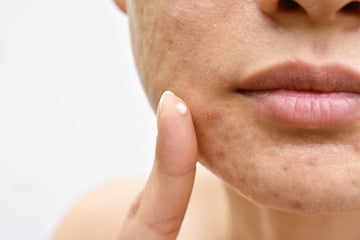
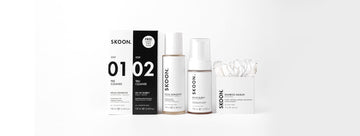
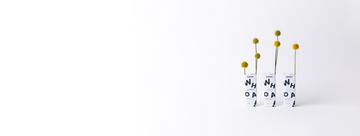
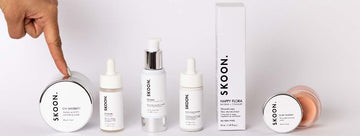
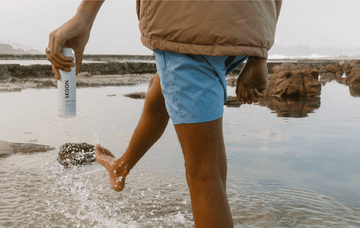
Thanks for this blog, it is a really interesting read! I have been trying to figure out what has been causing my skin problems, and the article has helped me categorize my different breakout issues. And also realize that some issues (like Milia) can take long to heal. Good to know I am using the right Skoon products for my concerns. :)